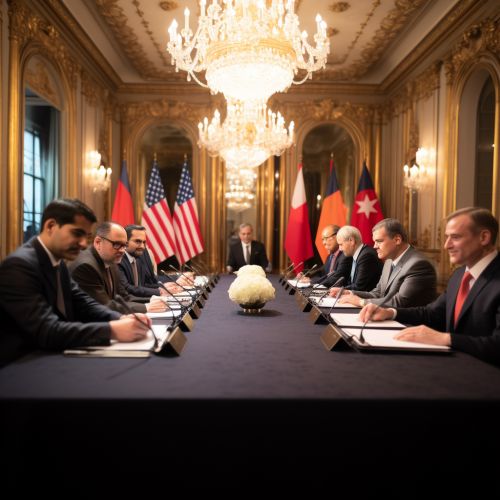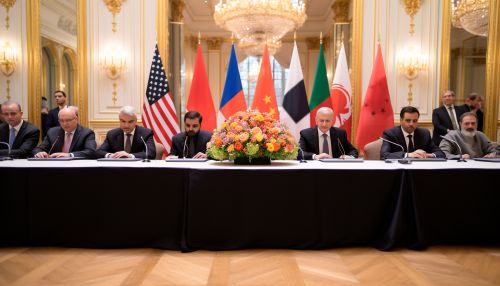North Atlantic Treaty
Origins
The North Atlantic Treaty, also known as the Washington Treaty, is the foundational international agreement that established the North Atlantic Treaty Organization (NATO). The treaty was signed on April 4, 1949, in Washington, D.C., by 12 original member countries: Belgium, Canada, Denmark, France, Iceland, Italy, Luxembourg, the Netherlands, Norway, Portugal, the United Kingdom, and the United States. The treaty was a response to the growing threat of Soviet expansion in Europe and the need for collective defense among Western nations.


Principles and Objectives
The North Atlantic Treaty is based on the principle of collective defense, stipulated in Article 5, which states that an armed attack against one member in Europe or North America shall be considered an attack against them all. This principle is a manifestation of the broader concept of collective security, which posits that peace can be maintained by a collective response to acts of aggression.
The treaty also emphasizes the importance of democracy, individual liberty, and the rule of law, as outlined in the preamble. These principles serve as the bedrock of the alliance and guide the actions of its members. The treaty also encourages political, economic, and social collaboration among its members.
Structure and Provisions
The North Atlantic Treaty consists of 14 articles. The key provisions of the treaty include:
- Article 1: The parties undertake to settle any international disputes in which they may be involved by peaceful means in such a manner that international peace and security are not endangered.
- Article 2: The parties will contribute toward the further development of peaceful and friendly international relations by strengthening their free institutions and promoting conditions of stability and well-being.
- Article 3: The parties will maintain and develop their individual and collective capacity to resist armed attack.
- Article 4: The parties will consult together whenever, in the opinion of any of them, the territorial integrity, political independence or security of any of the parties is threatened.
- Article 5: The parties agree that an armed attack against one or more of them in Europe or North America shall be considered an attack against them all.
- Article 6: Defines the areas where an armed attack would trigger collective defense.
- Article 7: This Treaty does not affect, and shall not be interpreted as affecting in any way the rights and obligations under the Charter of the United Nations.
Expansion and Evolution
Since its inception, NATO has expanded to include 30 member countries. The first expansion occurred in 1952 with the addition of Greece and Turkey, followed by Germany in 1955. The end of the Cold War saw a significant expansion of NATO, with former Warsaw Pact countries and former Soviet republics joining the alliance.
The North Atlantic Treaty has also evolved over time to meet new security challenges. The invocation of Article 5 for the first time in response to the September 11, 2001, terrorist attacks in the United States marked a significant shift in NATO's focus from collective defense against state actors to non-state threats such as terrorism.
Criticism and Controversy
The North Atlantic Treaty and NATO have been subject to criticism and controversy. Critics argue that NATO's expansion towards Russia's borders has contributed to tensions between Russia and the West. Others question the relevance of NATO in the post-Cold War era and argue for its dissolution. The unequal burden-sharing among NATO members has also been a point of contention.
